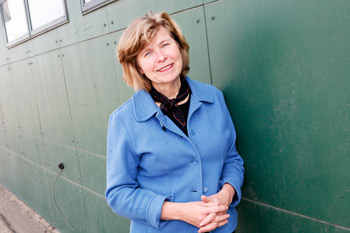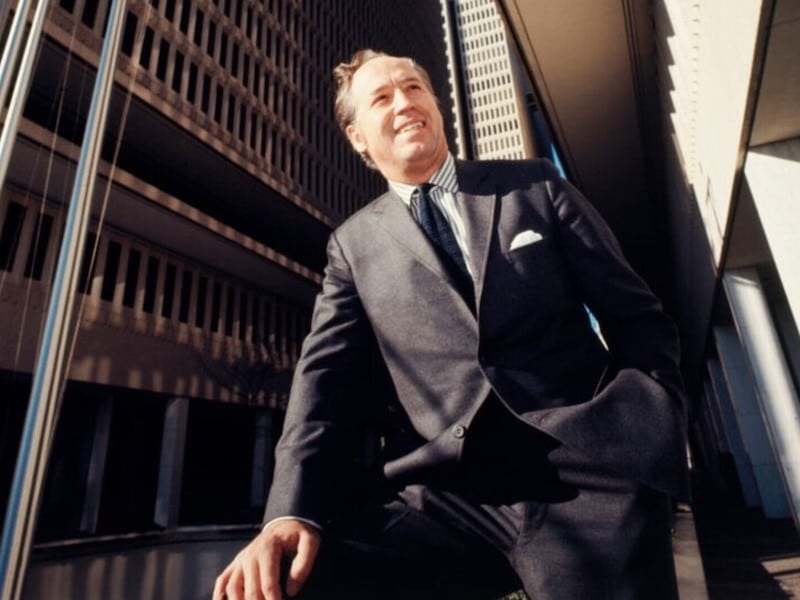Architects Working on a ‘Green Zone’ for Detroit
A group of Detroiters, together with a team from the American Institute
of Architects, will test the theory that greener transit, retail, services, and waste
management will actually create wealth.
Many, and not just in the governor’s office in Lansing, are pegging Michigan’s economic future on sustainability.
A group of Detroiters, together with a team from the American Institute of Architects (AIA), will test the theory that altering energy systems, such as transportation, retail and service consumption, and waste management, will actually create wealth, in monetary terms and quality of life.
 “Any time you can shorten an energy system, you’re creating prosperity because you don’t have spend as much money for fuel or the time it takes or the (cost of) wear and tear on the roads and on the other hand, you’re creating a cleaner environment,” says Diane Van Buren Jones, program director for Rebuild Michigan – Detroit, the lead person securing support from the AIA Sustainable Design Assessment Team.
“Any time you can shorten an energy system, you’re creating prosperity because you don’t have spend as much money for fuel or the time it takes or the (cost of) wear and tear on the roads and on the other hand, you’re creating a cleaner environment,” says Diane Van Buren Jones, program director for Rebuild Michigan – Detroit, the lead person securing support from the AIA Sustainable Design Assessment Team.
The Detroit group plans to link Southwest Detroit, arguably the city’s most vibrant commercial and population center, with the medical/cultural/educational resources of Midtown and New Center, and the food supply of Eastern Market, according to Jones. The key, she says, is to connect the “rings of sustainability;” the economy, environment, and social equity/community vitality.
By reducing consumption of energy, preserving the environment – built and natural – and creating opportunity for local people to live well and contribute to the economy through entrepreneurial development, prosperity occurs.
The sustainability project involves creating a “green belt,” which should not only suggest trees and urban gardens but also an ecologically efficient balance.
“The green zone helps us rethink our spacial relationships, helps us see the connections of economic zones from a design perspective,” she says. “We’re looking for the opportunity to close the loops and bring connections within the green zone.”
One such opportunity came naturally for two business people sitting next to each other at a recent Southwest Detroit meeting, Jones says. An owner of a Southwest Detroit tortilla factory and an owner of a cold storage company were talking about their delivery trucks. It turned out that one was sending an empty truck to South Carolina to pick up rugs to bring to Michigan. The tortilla factory owner was sending a truck to South Carolina to deliver tortillas.
“They closed the loop when they realized that they could share a truck,” Jones says. “There’s innovation in this. You’re helping people think differently. The minute you open that door, peopled start to rethink how they do business.”
Jones realizes her concept runs counter to traditional free market capitalism. She also admits that it has to make sense economically. “The old economy, the way we’ve built Detroit for centuries, looks at economics first, essentially, exploiting the natural and human resources to produce wealth, she says. “It can’t just be the economics.”
You can’t have long-term prosperity at the expense of the environment, Jones says.
Jones distinguishes between “prosperity” and the traditional definition of wealth. Prosperity, in this model, comes first from the efficient downsizing of resource usage, then through the creation of an environment that encourages entrepreneurial development, or, a new economy. Rather than individual wealth, it’s more a sense of holistic community well-being. A fundamental principle of sustainability, she says, is that the community has social equity invested in its local area.
For example, she says, in an affluent suburb may actually be less prosperous because people need to spend their money on fuel, expend time commuting, and therefore rbe less able to support discretionary alternatives like entertainment, culture, or charity, and have a lesser quality of life as a result.
All of this will seem strange to Detroiters weaned on a sprawling horizon leaving an urban core in ruins – almost development in reverse. The AIA may not see a more challenging environment for sustainability.
 “Detroit is a fascinating case,” says Erin Simmons, director of Community Design for the AIA Center for Communities by Design. “It’s a city that has had more than its fair share of struggles over the years.”
“Detroit is a fascinating case,” says Erin Simmons, director of Community Design for the AIA Center for Communities by Design. “It’s a city that has had more than its fair share of struggles over the years.”
The AIA has been conducting urban sustainability assistance since establishing the Regional Urban Design Assistance Program in 1967. It originated as a grassroots effort by architects to address failing downtowns and urban renewal from a built environment perspective.
“People hear that this program is administered by architects and think it’s going to be a team of architects – why would architects be interested in this; they’re interested in building?” notes Simmons. “Most architects are interested very much in community building. It’s not just a building, it’s building a community and buildings relate to it. The Detroit project will involve an interdisciplinary team of no more than one or two architects, she says.
Professional volunteers involved in the Center for Communities by Design are not interested in doing “the easy projects,” she says. “They are motivated by a genuine desire to go to the places that need them the most. … When we got the Detroit application we were all extremely excited. We’ve wanted to do work in Detroit for quite some time now.”
Detroit, she admits, is not an easy fit for sustainability. “Detroit has faced challenges that other areas of the country have not had to deal with. That being said, we like a challenge”
Why does she believe that urban Detroit, ravaged in a variety of ways, compounded by regional sprawl, can be sustainable? It won’t be their efforts, as much as the energy and commitment of the local stakeholders that will actually make or break this effort, according to Simmons
“We’re going to come in with a group of highly talented individuals from all over the country with a real passion for what they do and aren’t being paid for their work,” Simmons says. “We’re going to provide some suggestions. Then it’s up to the people we meet and the people we hopefully mobilize in the community to see that through. It’s tricky. We know we’re outsiders coming into a community.”
 The AIA team plans a site visit for late spring, followed by an intensive three-day visit involving meetings with community leaders and stakeholders, tours, fact-finding, and a community charette, which gathers community input on a large scale. After analyzing their visit, the team will complete a report by the end of 2008, according to Simmons.
The AIA team plans a site visit for late spring, followed by an intensive three-day visit involving meetings with community leaders and stakeholders, tours, fact-finding, and a community charette, which gathers community input on a large scale. After analyzing their visit, the team will complete a report by the end of 2008, according to Simmons.
Detroit’s sustainability project may be local, but the issue is global, says Jones.
“We have to be mindful of the planet and the environment as we develop. If we’re not thinking sustainably, what will happen?…The planet is cooking itself.” In the vein of “less is more,” Jones says, “Let’s think about how we can do less harm (to the environment) yet create economic good for our community…It’s really possible to do this.”
It will take governmental incentives, an environment where sustainable economics will work and where people are ready for this transition, Jones says.
“You’re not going to a place where people aren’t ready, willing, and able. Build enough of a community, then it becomes more palatable.”
This type of innovation may not be “as glamorous as the tech guys who are supposed to be coming in,” Jones says. “But I think there is even greater opportunity for entrepreneurial development” in Detroit’s “green zone.”
Dennis Archambault is a Detroit-based freelance writer and frequent contributor to Model D and metromode.





